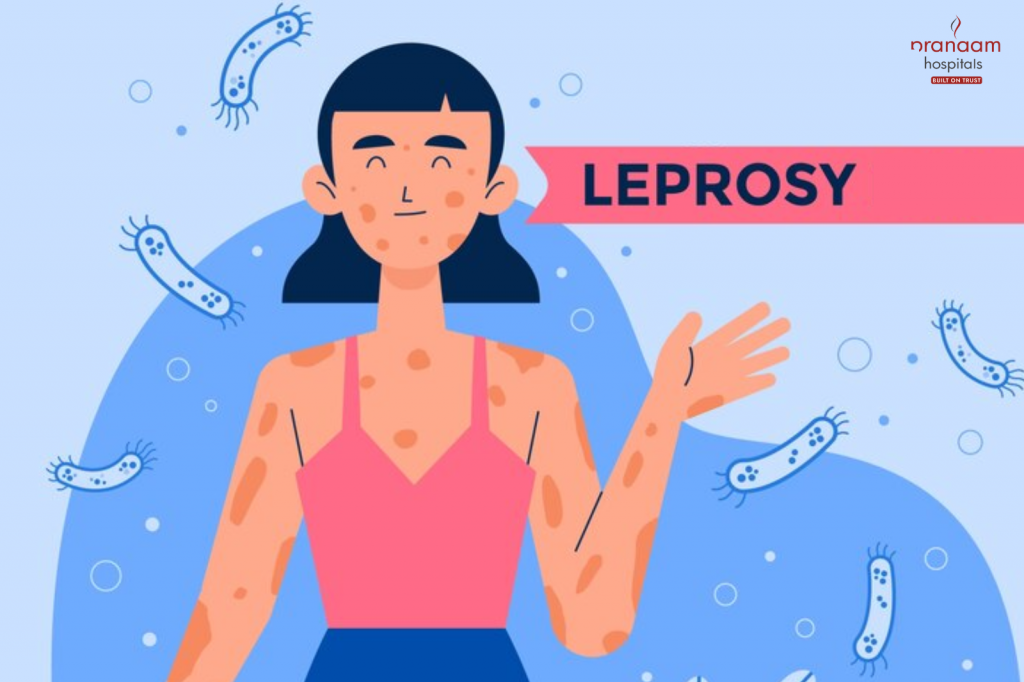Mycobacterium leprae is the causative agent of leprosy, often referred to as Hansen’s disease. It is a persistent infectious disease that primarily affects the skin and peripheral nerves. Severe malformations and impairments may result if treatment is not received. Leprosy is a slowly progressing disease; it may take years for symptoms to appear.
Symptoms:
Skin Lesions: Skin lesions or spots that are paler than the surrounding skin are common signs of leprosy. Lesions can be pale or hypopigmented, and occasionally, they can be reddish-brown in color.
Nerve Damage: Peripheral nerves are the main nerves affected by leprosy, causing numbness or loss of feeling in the affected locations. Paralysis and weakened muscles are possible outcomes of nerve injury.
Enlarged and Thickened Nerves: The afflicted nerves may develop thickened nodules or lumps beneath the skin.
Damage to the Eyes: Leprosy can cause damage to the eyes, resulting in a range of issues such as dryness, decreased blink reflex, and, in extreme situations, blindness.
Wounds and Ulcers: Leprosy patients may experience unrecognized sores, ulcers, or injuries due to diminished sensitivity, which can result in secondary infections.
Causes:
Mycobacterium leprae: Mycobacterium leprae is an acid-fast, rod-shaped bacillus that causes leprosy. The skin and nerves are the main organs affected by the bacteria.
Transmission: Although the precise method of transmission is unknown, it is thought to occur through respiratory droplets from an infected person during close, sustained contact.
Long Incubation Period: The leprosy infection takes several months to years to fully develop. This complicates the process of figuring out how and when the infection was contracted.
Poor Immune Response: Leprosy may be more common in those with weakened immune systems, malnutrition, or other medical disorders.
Human-to-Human Transmission: There is no proof that leprosy is spread by animals; instead, it is largely spread from person to person.
Multidrug therapy (MDT) can cure leprosy, and early diagnosis and treatment are essential to avoiding complications. Leprosy has become much less common worldwide as a result of public health initiatives, although it is still present in some areas. Leprosy control still depends on ongoing treatment and monitoring initiatives.
Also Read: Benefits of prenatal yoga
Understanding about common health concerns in men


